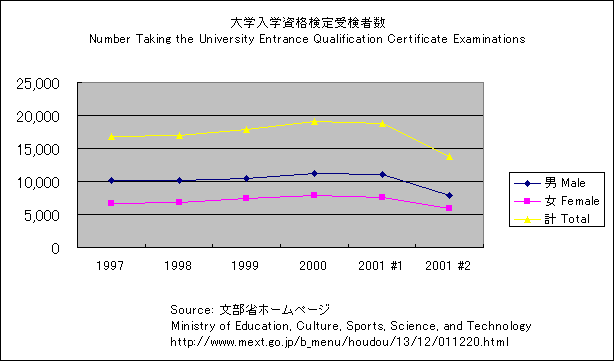University Entrance Qualification Certificate Examination
大学入学資格検定試験(大検)
だいがくにゅうがく しかくしけん
With the introduction of the University Entrance Qualification Certificate Examination (Daiken) in 1951, for the first time it became possible for those who had not graduated from high school to qualify for university entrance. Those who pass this examination are certified by the national government for scholastic achievement equivalent to or higher than a high school graduate and are qualified to sit for university entrance exams. The Daiken examination is held every year in August throughout the country.
When this system was launched, it targeted young working people who were unable to attend high school for economic reasons. In today's more affluent society, however, working youth account for only 10% of all applicants while former high school dropouts account for approximately 60%. 《→chutai 中退 school dropouts》
At total of 21,288 people (12,505 males, 8,783 females) took the Daiken in 2000, the largest number since the system was instituted. Approximately 50% passed. About 1% of all those who took the National Center for University Entrance Examinations tests in 2001 were holders of a University Entrance Qualification Certificate.

|
|